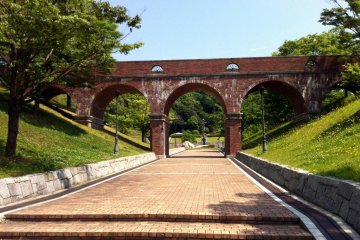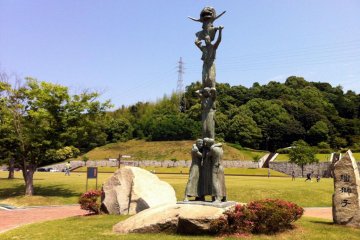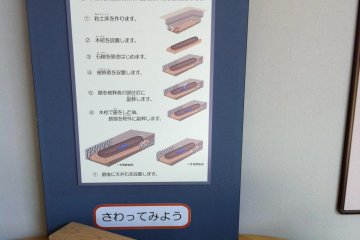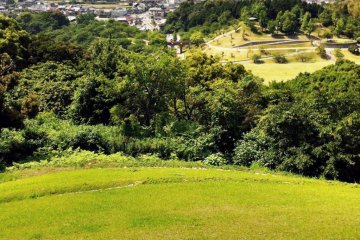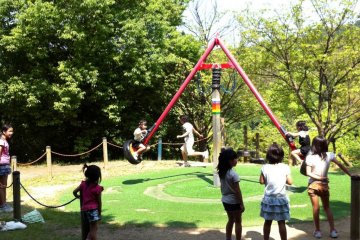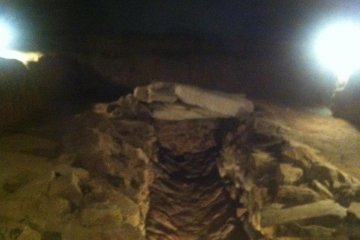Just off the road between Matsuyama and Imabari is a surprising find—a very attractive park complete with its own prehistoric burial mound. The park is hidden from view by a ring of trees on a raised bank. A path leads up from the small car park under a pretty brick viaduct past a variety of more or less bizarre bronze statuary. Once you pass under the viaduct, you find yourself in a sort of arena—a very large expanse of flat lawn surrounded by steep hills. Dotted here and there are various facilities and attractions. Families were enjoying a bit of kick-about football on this unusually big space.
One of the facilities in the park is the Onishi Fujiyama Historical Museum which is devoted to ancient burial mounds and the culture that built them. This museum costs 300 yen to enter, which is rather expensive considering how little it contains. It does a competent job of showing what was found in the kofun or burial mound on the hill above the park. There were two bodies in separate burials, lying in very large coffins which consisted of hollowed out logs in stone-lined enclosures. Artifacts found in the graves included swords and mirrors, which later became key symbols of Shinto. There’s a mockup of the inside of the grave, some of the pottery that was found on the site, and some hands-on exhibits—polished metal mirrors for confirming your own beauty, and build-your-own-kofun type things. After the museum I was keen to get up to the kofun itself.
There are two routes up. Both are very steep. One leads up behind the museum via an exhibit consisting of Perspex domes housing the flagstones that originally covered the graves. Beyond these fairly uninteresting stones, the path winds up through pleasant woods where many birds were singing. The kofun itself is a very nice spot with panoramic views over the surrounding landscape and the Seto Inland Sea with its shipyards and cranes. From 10:00 to 10:30 and 15:00 to 15:30, an old gentleman is on hand to let you into the kofun itself. You enter a very mildewy smelling Perspex chamber from which you can see the stone enclosure of the grave. It’s not hugely impressive, but I’m glad I went in.
I went back down to the park via the other route. At the bottom, I found myself in a little valley with a very pretty garden and pond. Butterflies and dragonflies were flitting among the spring flowers around the pond. Across the big lawn area from this garden is a children’s playground with some very enticing funnables, something which Japan does very well. There was a crazy roundabout thing that I would have given my back teeth to go on if there weren’t children already lining up for their turn.
This is an excellent spot for a bit of exercise and a picnic, combined with some prehistoric history and culture.







